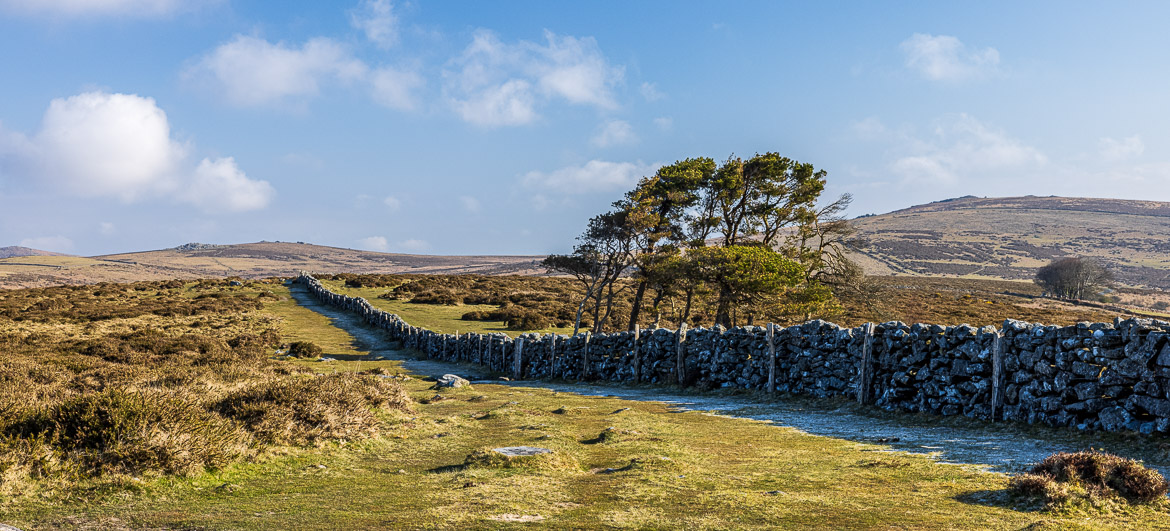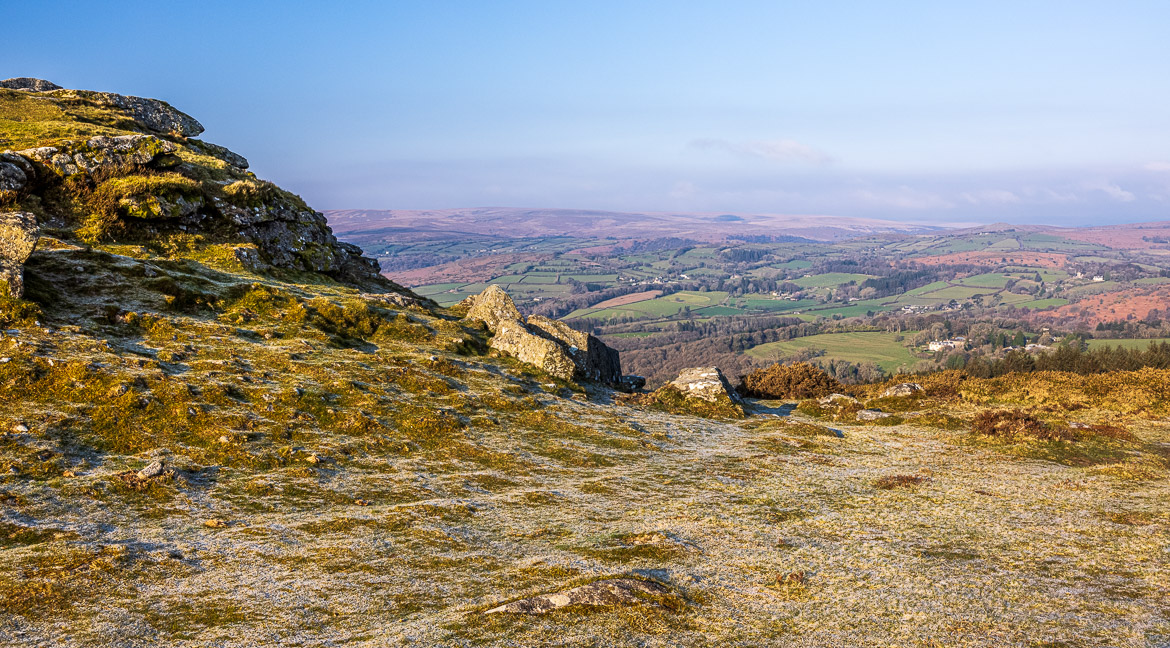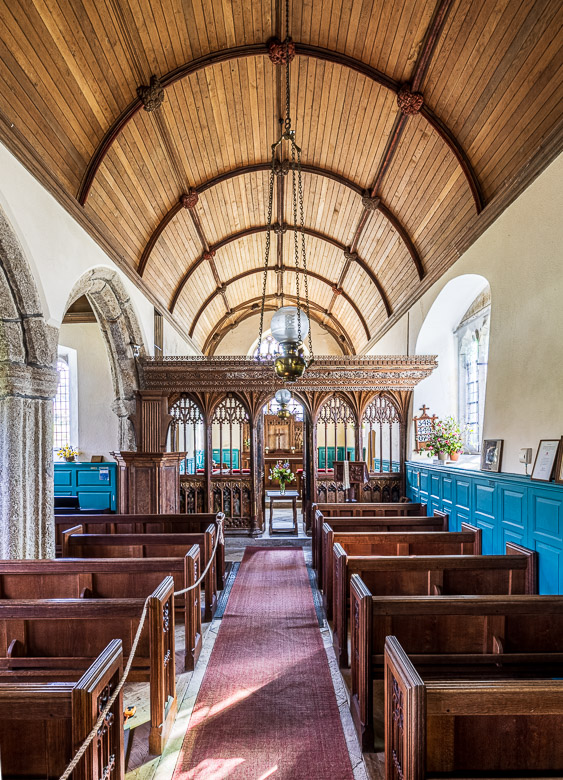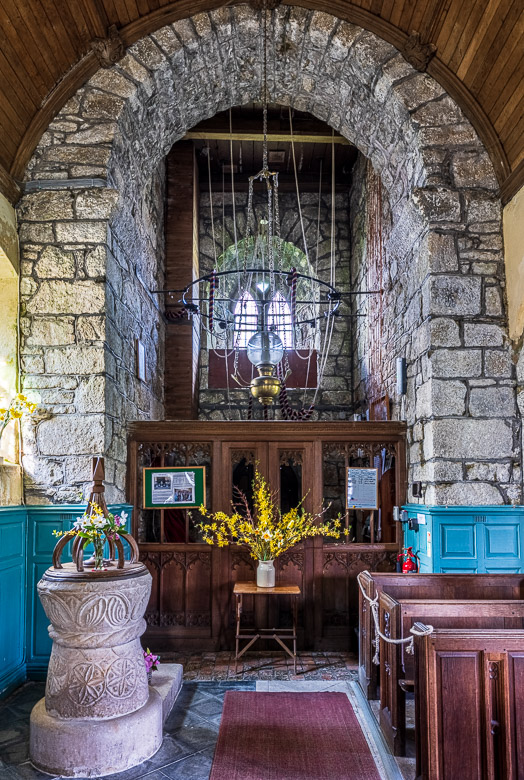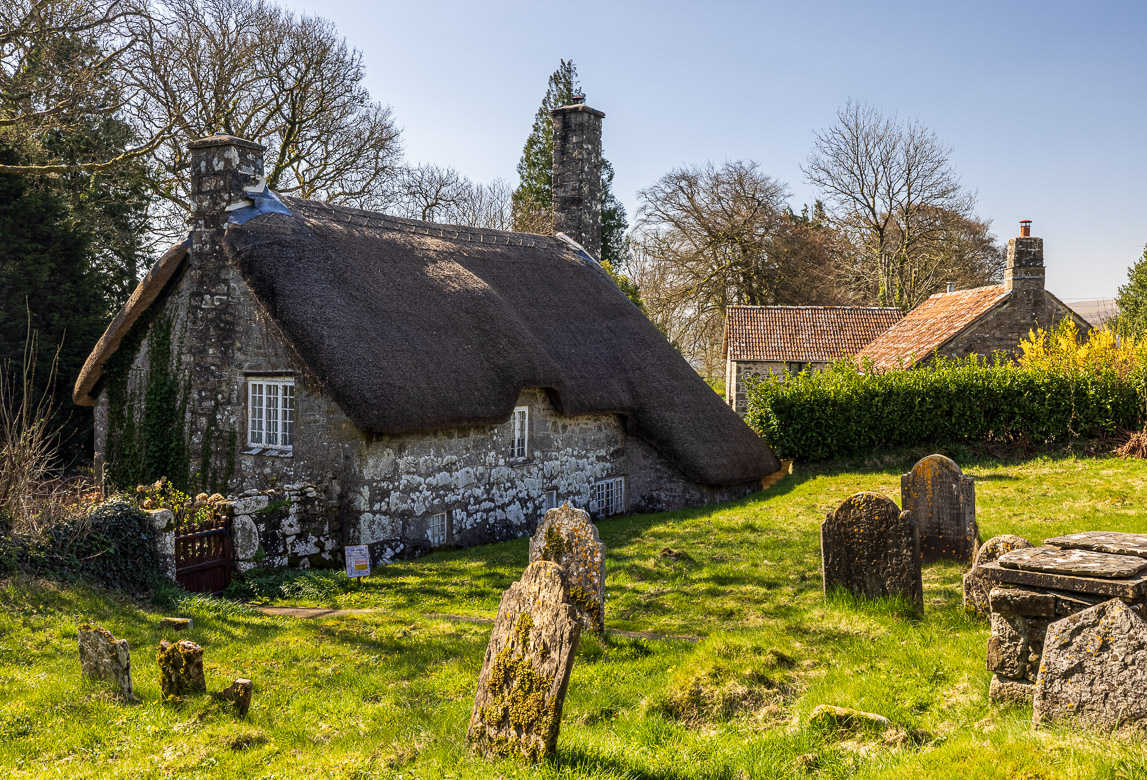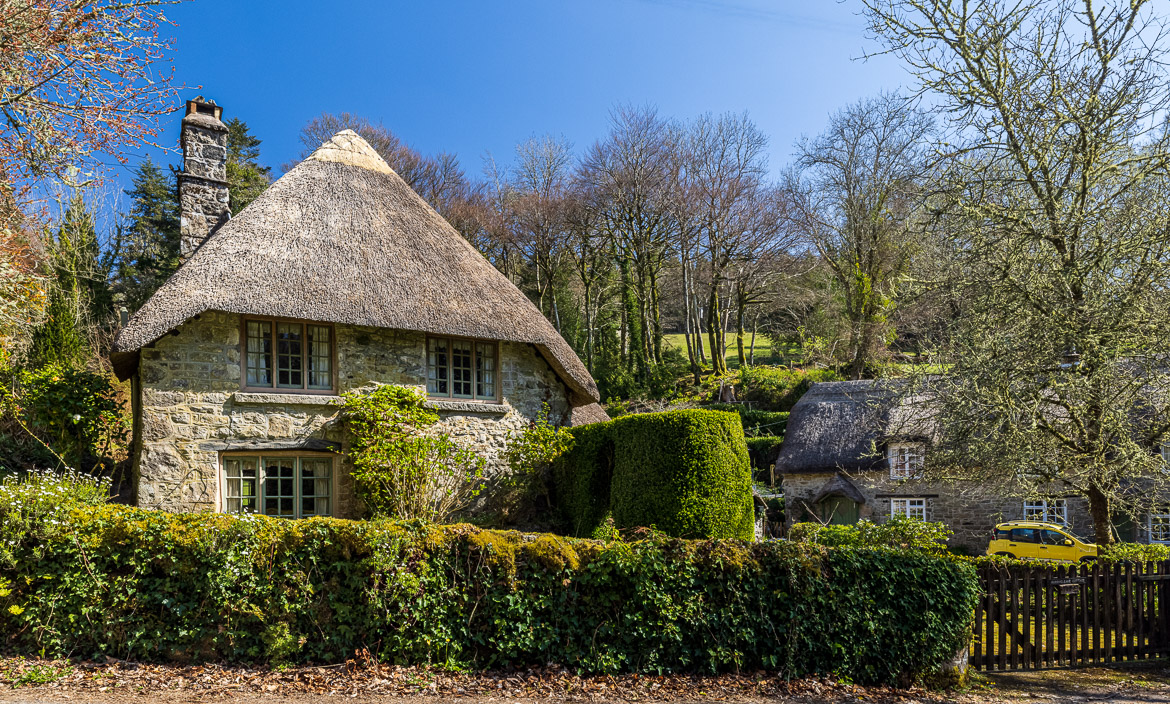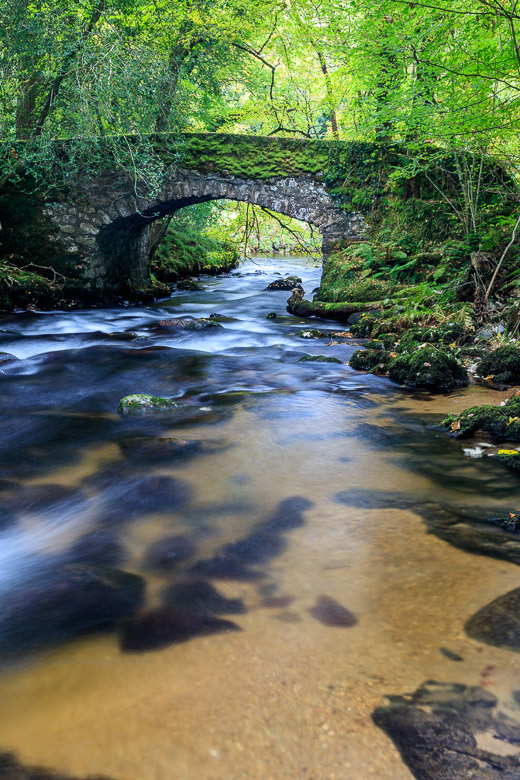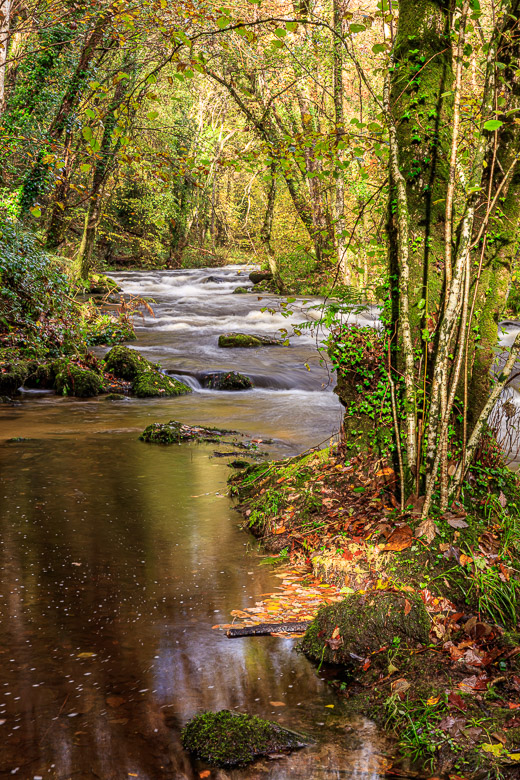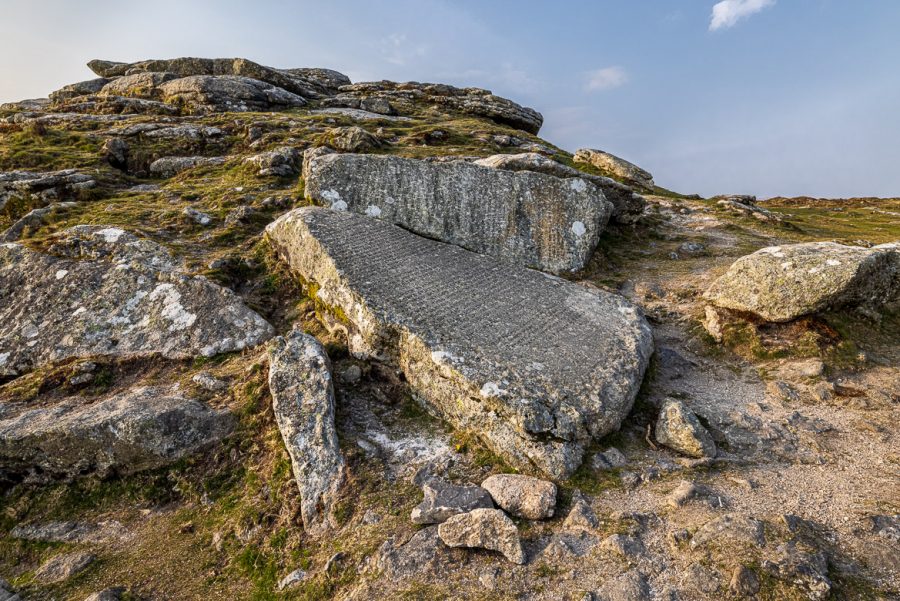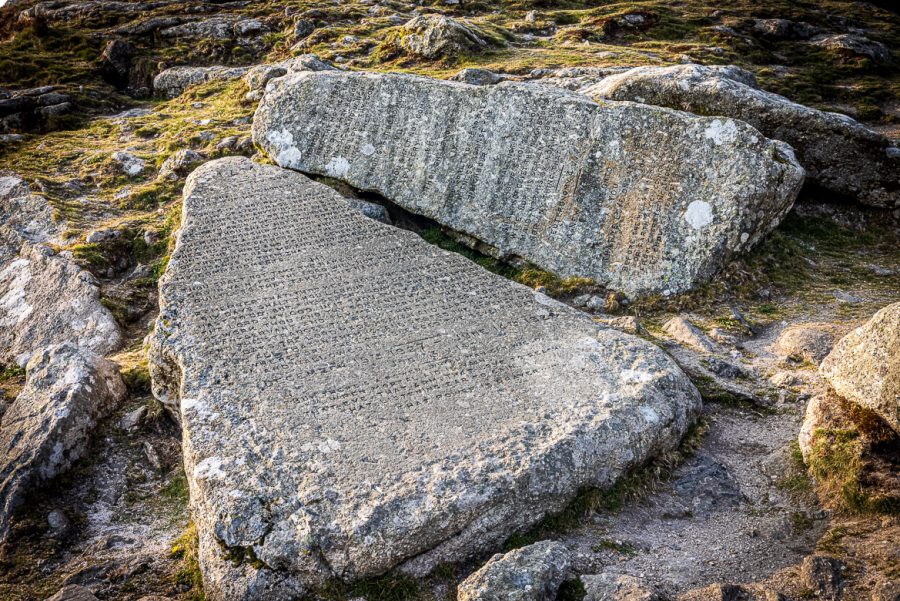Buckland-In-The-Moor
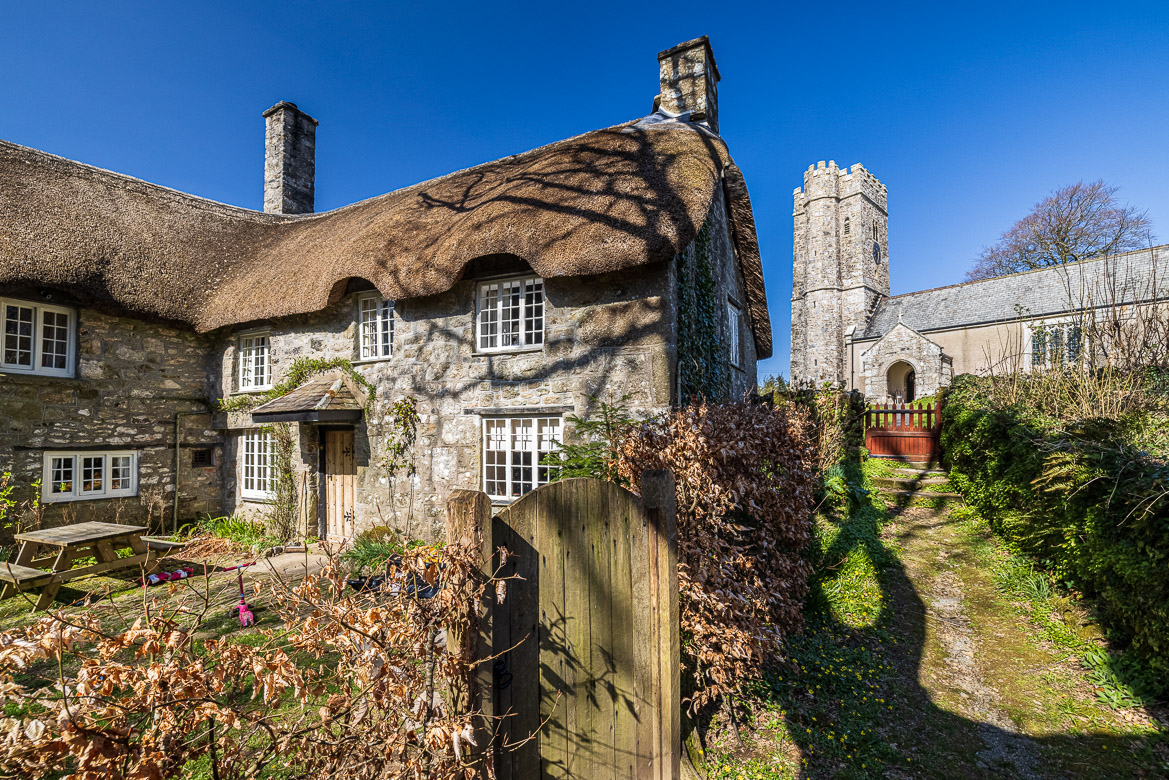
Buckland-In-The-Moor is a lovely little village on Dartmoor. Like most of the villages and towns here, it is situated on the outskirts of the Moor, where the land is lower and the wind not so biting nor the rain as disagreeable as on the main parts of Dartmoor. It is a tiny village with only 94 inhabitants (according to the census in 2001). The houses and the church are beautiful, although I failed to find any sign of the other English institution that normally exists in every village – the pub!
I know that when you are reading this you wonder what this has to do with the 11th Commandment. Please, dear Reader, have patience and it will all be revealed!
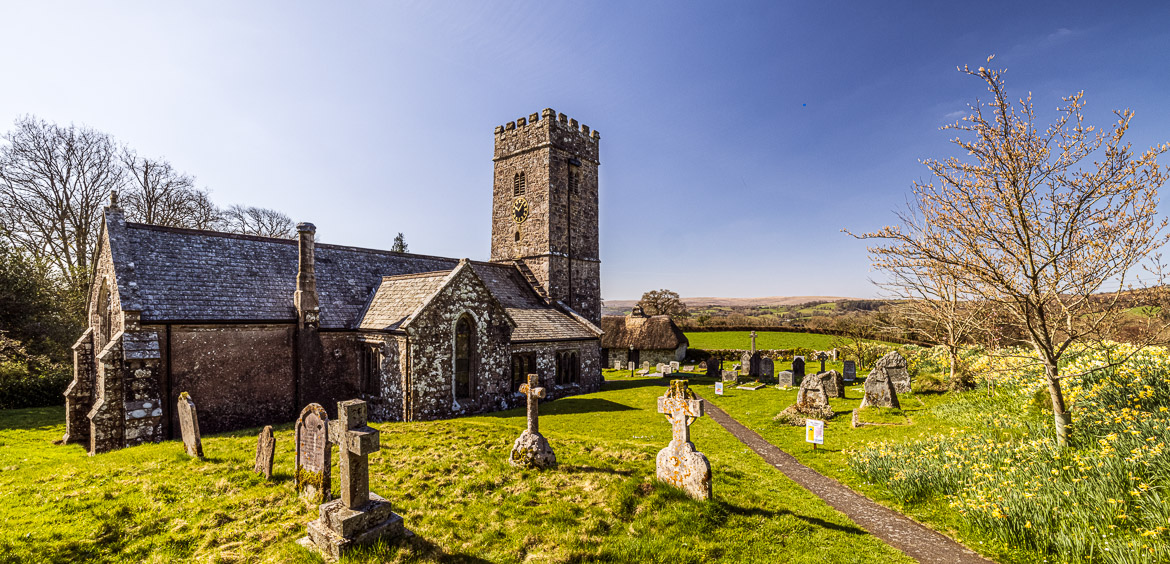
The village was mentioned in the Domesday Book of 1086. The Church of St. Peter was first built in the 13th century and the present church dates to late 15th or early 16th century. Inside there is a most beautiful painted 14th century screen and an 18th century wooden pulpit (see images below). There is also a wooden wagon roof and at the entrance, near where the bell-ringers are, is a very attractively carved Norman Font (again, see images).
Looking towards the altar of the St Peter’s Church. Notice the wonderfully shaped wagon roof. In the other direction you can see where the bell-ringers would be positioned underneath the church bells and also the Norman font to the left. Notice the carvings on the font.
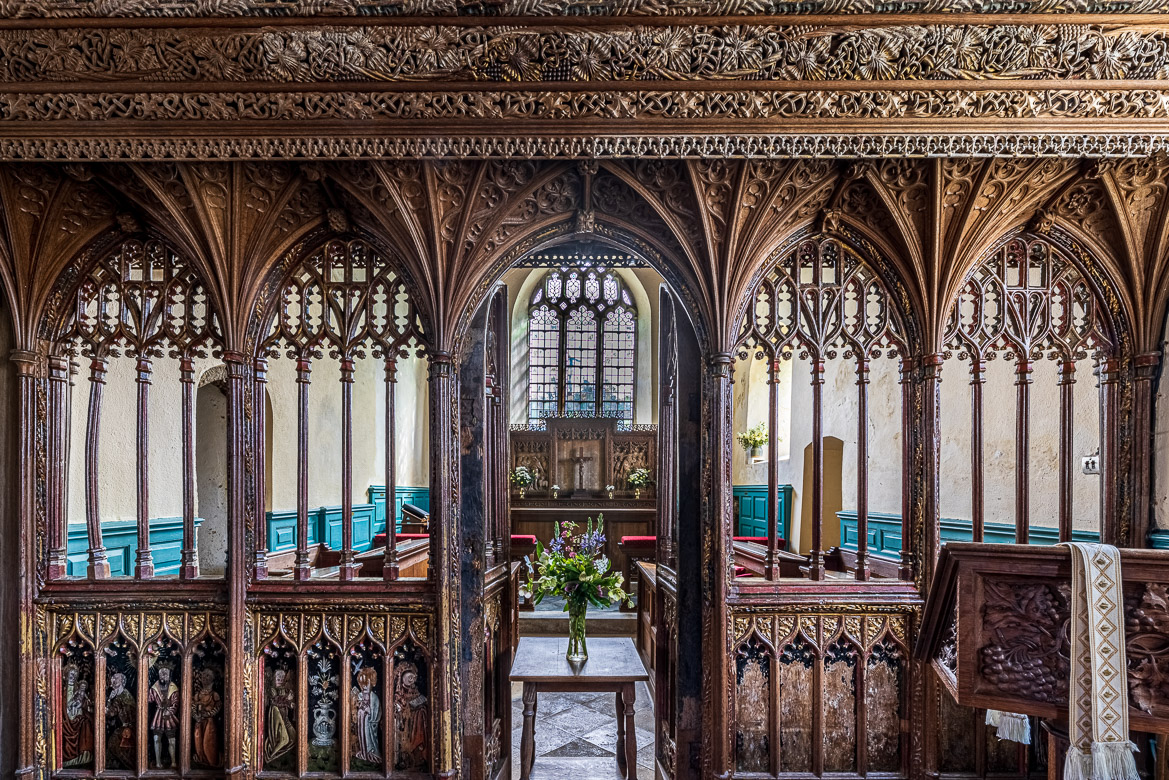
But the outside is as interesting as the inside of this lovely church. At the bottom of the churchyard stands a very attractive thatched vestry, the only one still in use in England. You can see it to the right of the church itself in the second image from the top, and below here is an image of just the vestry itself.
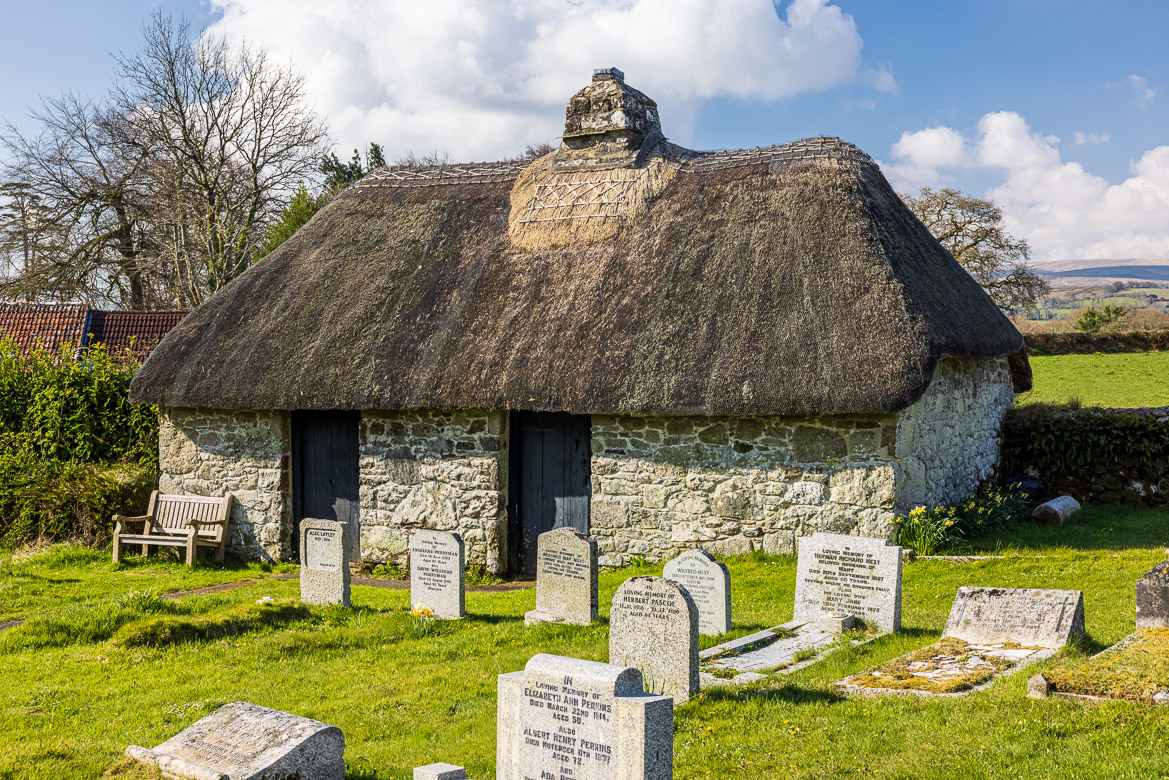
And below are a couple of images of different cottages in the village. The first is taken from the churchyard itself, the second is of Ruddycleave Cottage, situated further down from Buckland-in-the-Moor at Ruddycleave Water.
Cottage next to the church at Buckland-in-the-Moor Ruddycleave Cottage in Buckland-in-the-Moor
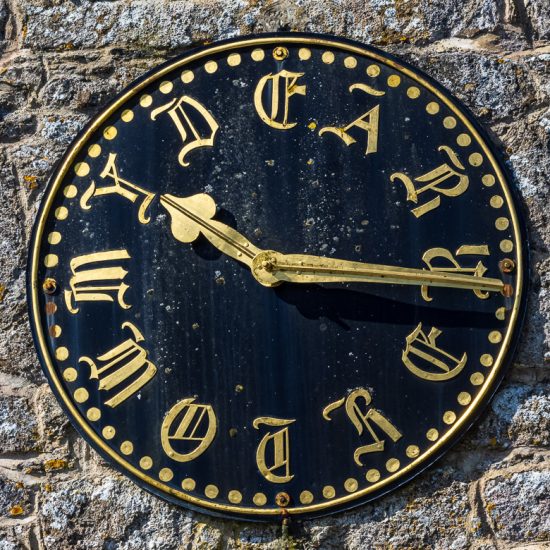
In 1931, the Lord of the Manor at Buckland, William Whitley, commissioned a new clock on the church tower in memory of his mother, who just has passed away. Instead of having the numerals as normally from 1 to 12, he had the letters MY DEAR MOTHER written on the clock face (starting from number 9 going clockwise).
Looking out from the churchyard there is a steep-sided valley, where river Webburn flows roughly on hundred metres altitude below. On the other side of the valley is another church and an imposing country house (see image below). I have always wondered, when I passed through Buckland, which village it was, as my photo tours never brought me there. So I decided one day to explore that (for me) unknown part of Dartmoor and came just in time to meet some of the villagers of Leusdon, an equally small parish on the other side of the river. And the house beside the village church is the Old Parsonage. I arrived just as one of the villagers was hoisting the flag on the church tower.
Climbing up to Buckland Beacon, 150 meters above Buckland-in-the-Moor and Leusdon you can see the two villages and the river valley in between. As you may see the photo on a smaller computer screen than mine, I have marked the village churches with large red rings to help you see the churches.
Leusdon and River Webburn
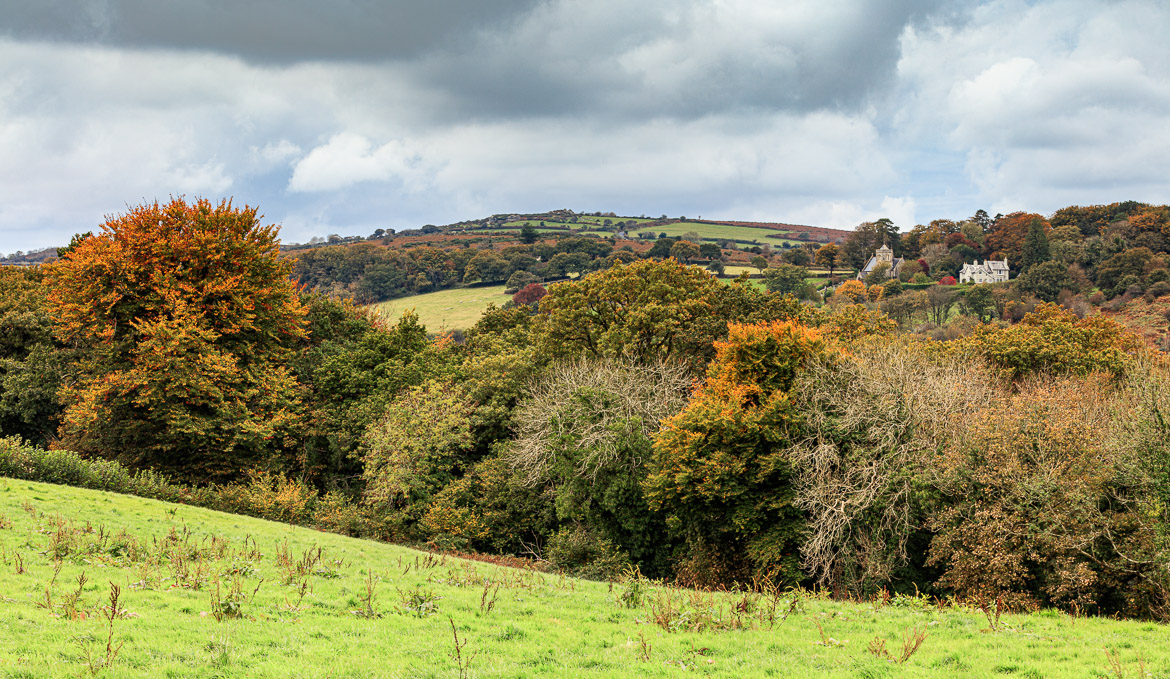
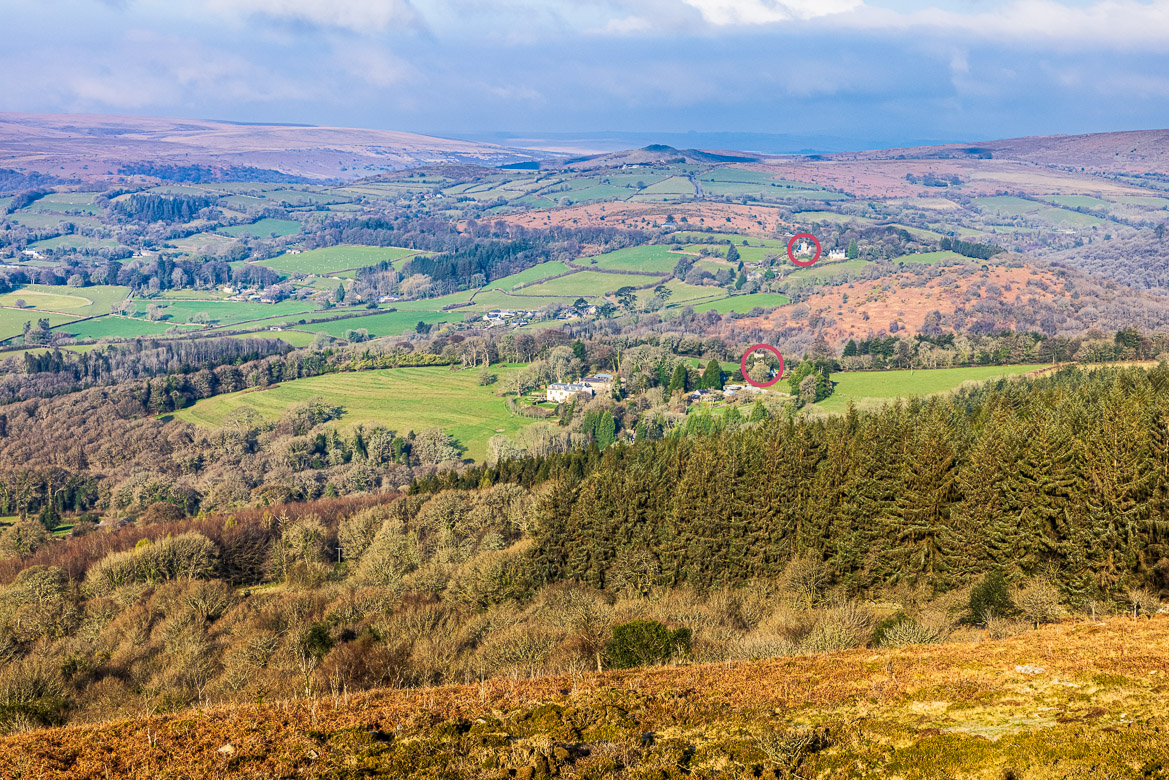
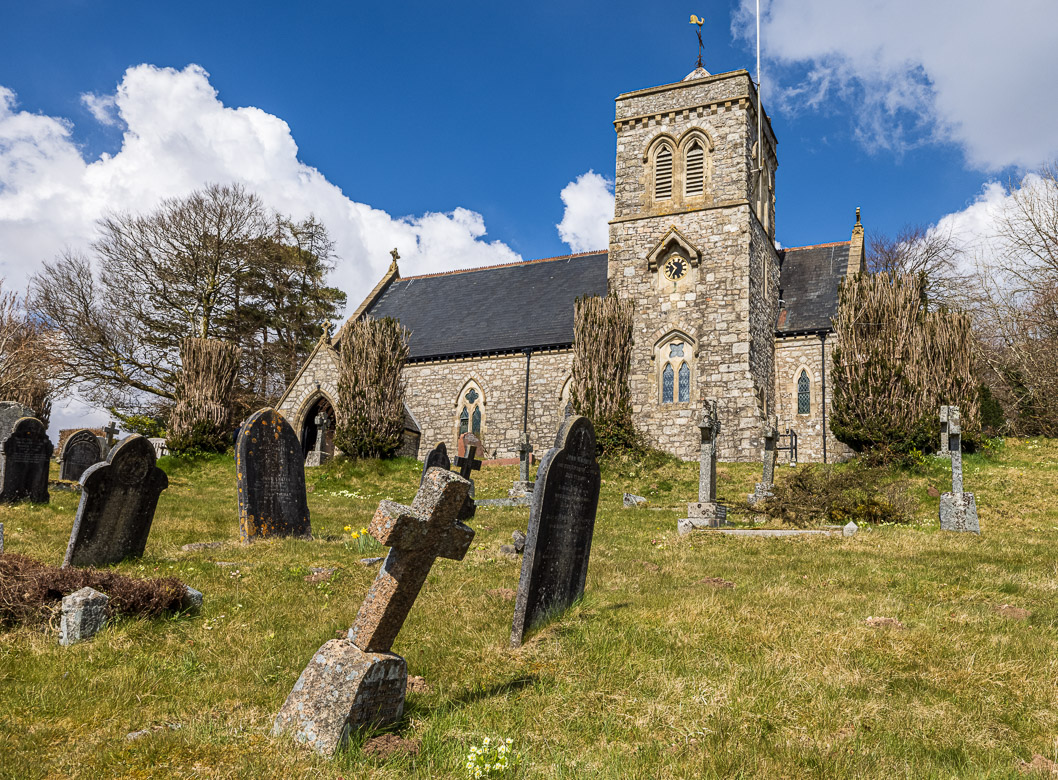
Between the two parishes, the River Webburn flows in the valley and meets up with the much larger River Dart further down. The images are from mid October and early November, and you can see what a difference two weeks makes to the colour of the leaves.
Looking downstream along River Webburn towards the Buckland Bridge River Webburn in November with a calm pool of water in the foreground and the rapids in the main river further back
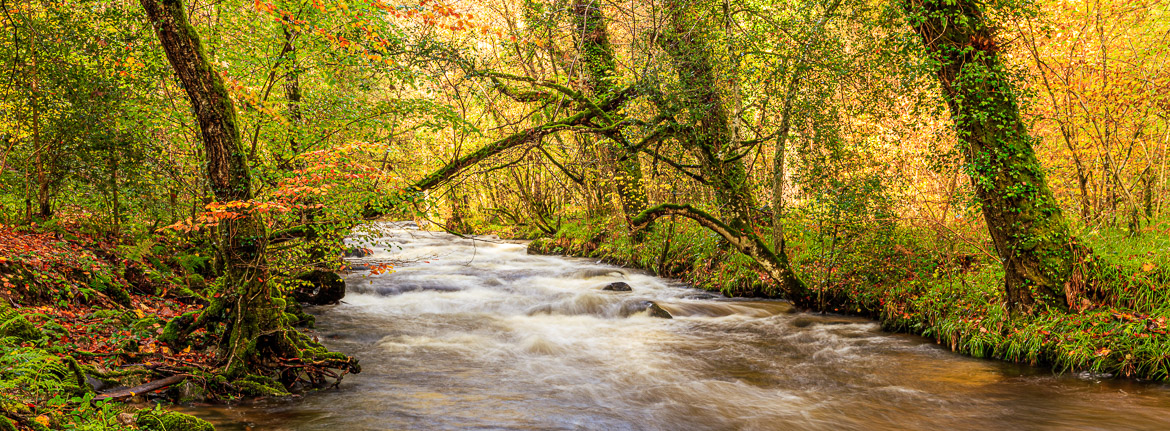
The Eleventh Commandment
In 1927 a proposal came before the House of Commons to revise the Book of Common Prayers by replacing the Ten Commandments given to Moses by Jesus Two Commandments and use them at Holy Communion. The proposal was rejected and this was seen as a victory by William Whitley, the same man who commissioned the clock face. In order to celebrate the victory he commissioned a stone mason, WA Clements, to cut a pair of granite stone slabs on the top of Buckland Beacon with the full text of the Ten Commandments.
The work took Clements 5 weeks, and he stayed in a shed nearby the Beacon during that time carving his stones. The first four Commandments were on one stone, and next to it was another stone with the other six. However, some space was left over on the second stone, and Whitley had to fill it with something, so he decided that on top of the original commandments also a verse from John 13 v34 should be inscripted that says: A new commandment I give unto you, that ye love one another.
Clements got the nickname Moses for his work with the Commandments on the Beacon. Later on he claimed, tongue in cheek, that unlike Moses he didn’t have to carry the slabs down from the top of the mountain. When you see the size of the slabs in the photos below, you must agree with Clements that it must have been a relief not to carry them down.
The walk up to Buckland Beacon offers beautiful panoramic views and the views from the Beacon itself show the parishes of Leusdon and Buckland-in-the-Moor and the river valleys of both river Dart and Webburn. The first you notice is the spectacular views, but walking around the beacon itself, on the south side are the two granite slabs with the Commandments. And also a space to sit and contemplate the Commandments and the lovely nature surrounding us. What a lovely place for the Ten Commandments (or Eleven!).
